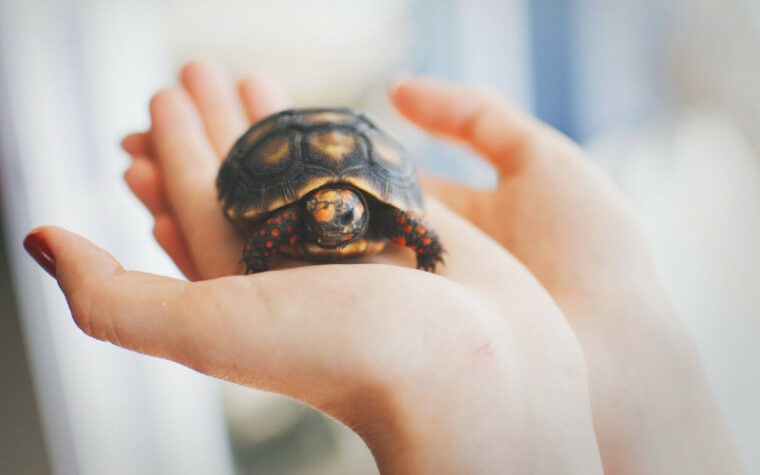
If you are interested in a pet reptile, you have many different species to choose from. The world of reptiles is vast, and each has unique attributes and care needs. We are talking about a variety of animals from all over the globe including all kinds of lizards, snakes, turtles, and more.
Before you make a final decision, there’s plenty of research that needs to be done. Keep reading to learn a few tips on how to choose the best reptile for you. Taking these things into consideration will allow you to narrow down your search so that you know exactly what you can handle.
 Top 7 Tips for Choosing the Right Pet Reptile:
Top 7 Tips for Choosing the Right Pet Reptile:
1. Keep Lifespan in Mind

Any pet that you bring home is a lifetime commitment. You will be responsible for feeding, sheltering, and caring for that animal for the rest of their lives. This is not only a time commitment but also a financial one, so when making your decision you need to keep their lifespan in mind.
The longevity of reptiles varies significantly depending on the species. One of the most popular pet reptiles in the pet trade is the Sulcata Tortoise, and these animals live equivalent to human lifespans or longer. If you purchase a baby Sulcata and it gets the care it needs, it will likely outlive you. That’s a lifetime commitment for you and the responsibility to ensure the pet gets cared for if you were to pass away first.
A lot of popular snake species like the Ball Python and Boa Constrictor will live up to 30 years or more in captivity. Chameleons and certain species of lizards have shorter lifespans averaging 7 years or less, but most pet reptiles have a minimum lifespan of 10 to 15 years.
Consider where you are at in your life, and what your plans are for the duration of your desired pet’s lifespan. You need to be certain you can provide them with care for the rest of their life.
2. How Much Do You Want to Handle Your Reptile?

Reptiles aren’t your typical cat or dog that will love to be handled and snuggled. These animals do not have the same type of emotional processing as seen in mammalians. Each species is unique, though, and will vary in overall sociality and handleability.
Snakes
Most reptiles are solitary creatures that are meant to be kept alone. For example, snakes do not have any social requirement and while it’s recommended to handle your pet snake occasionally so that they are conditioned for human touch, these animals will not form an emotional bond with you nor will they require any type of socialization.
Handling incredibly large snakes like Burmese Pythons, Reticulated Pythons, and large Boa Constrictors can be very dangerous, and is not recommended to do so single handedly. These animals are incredibly powerful and as a general rule, you want one person per every six feet of a snake for the handler’s safety.
Lizards and Turtles
Certain species of lizards, like bearded dragons, skinks, and tegus, tend to be more social and will sometimes respond positively to human contact. Once Geckos get used to handling, they are typically very receptive.
Studies have shown that green iguanas and turtles show an increase in heart rate when gently handled, which indicates emotional stress. So, while regular handling of these pets is essential to keep them tame, it’s also very distressing for them. Chameleons don’t like to be held at all; they are best left for observation.
Make sure you do your research on the specific species you are interested in and have a look at its level of handleability and how much human interaction can stress them out. Certain reptiles will be much easier than others. Here’s a quick list of some of the most docile pet reptiles that have great handleability:
- Bearded Dragon
- Leopard Gecko
- Ball Python
- Blue-tongued Skink
- Black and White Tegu
- Corn Snake
- African Fat-Tailed Gecko
- Crested Gecko
- Ackie Monitor
- Dumerils Boa
- Boa Constrictor
3. What Kind of Diet Are You Comfortable Feeding?
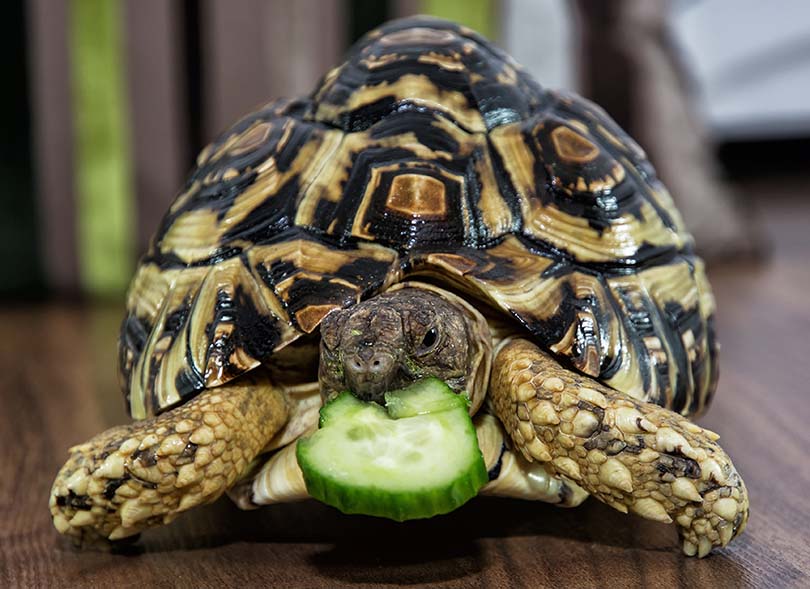
Reptiles are going to have very specific feeding requirements that not everyone may be comfortable with. Reptiles vary from strictly carnivorous, to omnivorous and herbivorous. Some only need one food source, while others eat a diverse diet that needs to be properly balanced.
Certain species will require live feedings, or you may have to thaw out whole frozen animals. Most pet snakes will feed on only whole rodents. While it is most often recommended to feed them frozen and thawed food, you may have to offer live food depending on the situation. Larger snake species can get big enough that they will require rabbits, chickens, and even neonatal pigs.
Most lizards, and semi-aquatic and aquatic turtles are omnivorous and need a variety of animal protein and vegetables, while tortoises are herbivores that eat mostly leafy greens and limited amounts of fruits and vegetables each day.
You may have to offer live crickets, roaches, and various types of worms depending on which type of pet you have. You also have to make sure you are feeding the correct ratio of food items to your pet.
There is a lot of research that goes into the specific dietary needs of reptiles, and it is essential for their overall health and well-being that they are fed a well-balanced diet for their size and age. Think about what kind of dietary commitments are comfortable and manageable for you and consider how you will go about obtaining and storing these food sources.
4. Consider Habitat and Husbandry Requirements

Habitat and husbandry are going to be very important aspects of keeping your pet reptile healthy and thriving. This is very specific to each species so you must do your research on what kind of environment they need.
Having an appropriately sized habitat with proper temperature, humidity, and ventilation is important for their survival. The various reptiles in the pet trade come from all over the world from different habitats and climates. Owners are responsible for mimicking their natural environment as closely as possible.
Some of these habitats and care needs are relatively low maintenance once all is all set up, while others require much more regular work. Again, this is highly dependent on the species, so please do your research and find what works best for you.
Failing to meet your pet’s environmental needs can lead to issues shedding, very serious health conditions, and even premature death. Make sure you can afford the upkeep and have all the tools it takes to keep their habitat suitable.
5. What Size Reptile Do You Want?
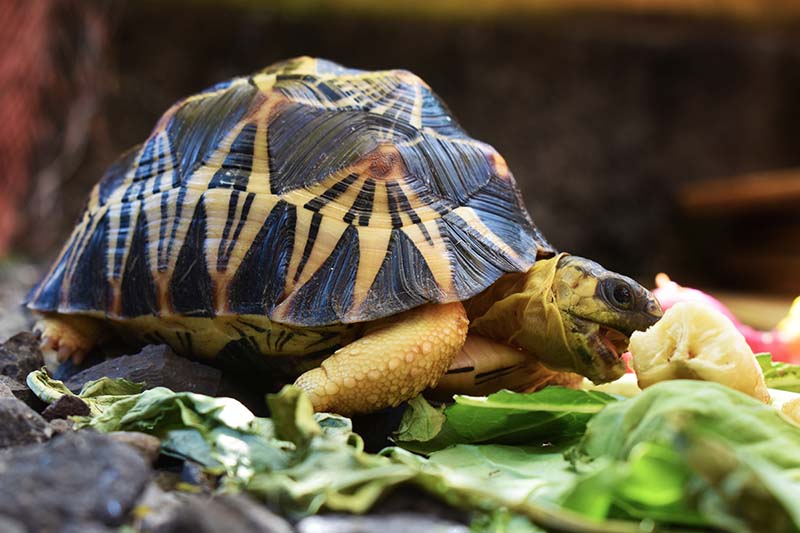
You need to consider what size of reptile you are looking for and how much space you have available to house them. Certain reptiles can get very large and require much more room than most people have to spare. Others are very small and have minimal space requirements, and then you have plenty of those in between.
Sulcata Tortoises require a lot of space and will end up needing an appropriate, temperature-controlled habitat and a fenced-in area because they can be highly active and need room to roam. These animals can get massive and reach up to 150 pounds when fully grown; an indoor area just can’t handle the size and space requirements.
Large snakes like the Burmese or Reticulated Pythons can grow up to 20 feet in length or more. Not only are they not recommended as pets in the first place because their sheer size is too much for most people to handle, but they also require very large living spaces that many can’t accommodate.
It’s important to note just how overwhelming large, powerful reptiles can be. Yes, they are incredible animals, but they are not for everyone. Most larger species have very specific care requirements and are never recommended for beginner keepers.
Figure out where you plan on keeping your pet within the home, what you plan on placing the enclosure on top of, and how much room you have to work with. If you don’t have a lot of space, there are plenty of small-sized pet reptiles that won’t take up too much room. Never buy blindly, but always research your species and their adult size for both males and females.
6. Consider Your Current Skill Level
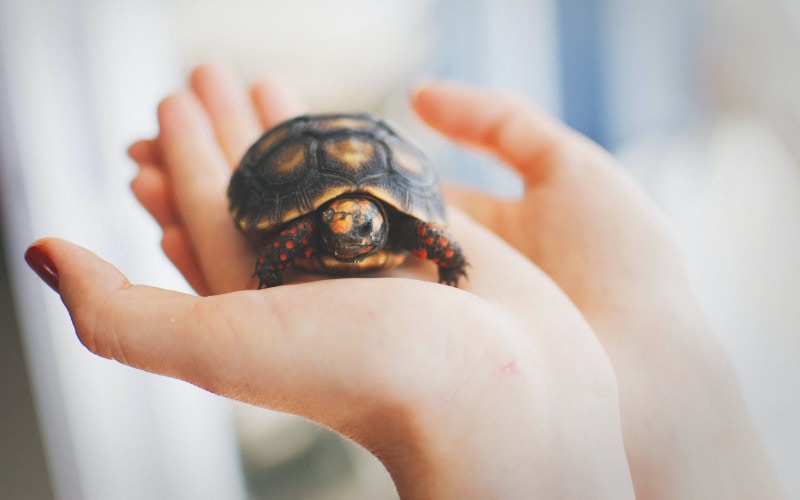
Not all reptiles are created equal when it comes to care requirements and handling, so you should consider how experienced you are before making a final decision. If you are brand new to the reptile world, it is highly recommended that you opt for a beginner-friendly species so that you can get experience.
Beginner species are typically low-maintenance pets that are more docile and easier to handle. Different types of reptiles are placed in different category recommendations based on how easy they are to feed, house, and care for. We also factor in their affordability, handleability, and how fragile they are in captivity.
As you become more knowledgeable and get more experience under your belt, you can work your way up to more challenging species, if it is something you are interested in.
Top Beginner Reptile Species for First-Time Owners
- Bearded Dragon
- Leopard Gecko
- Crested Gecko
- Corn Snake
- Children’s Python
- Ball Python
7. Look into the Legalities of Ownership
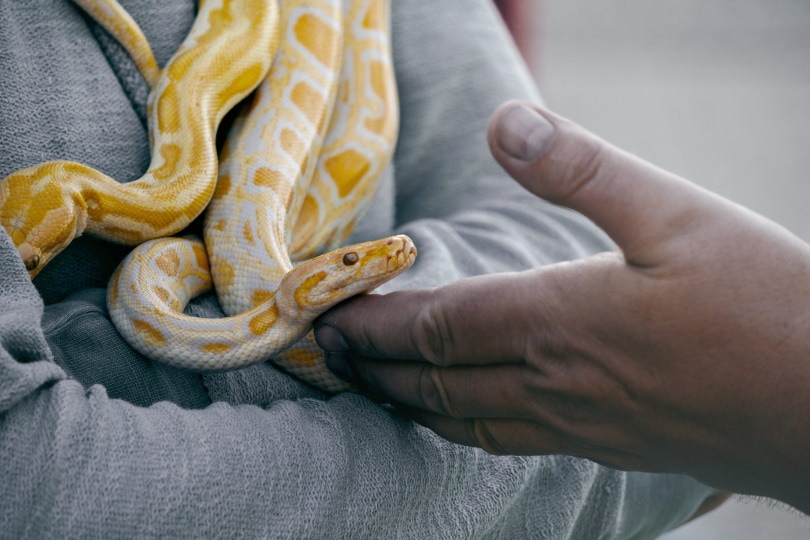
While not all reptiles will be legally restricted, certain species may be prohibited by state or local law or could require certain permits to keep. These types of restrictions on exotic pets are put in place for the safety of both humans and animals.
It is often illegal in most places to capture any local wildlife to keep as pets, so never keep any snakes, turtles, lizards, or any other wildlife you’ve come across. They should always be released into their natural habitat or a licensed wildlife rehabilitation service if they are ill or injured.
Legalities surrounding other pet reptiles are typically geared toward those that can cause serious bodily harm. This includes large snakes, alligators, or any venomous species. It is always best to check both your state laws and your local laws to ensure you can legally own the particular reptile you are interested in.
General Information on the Most Common Pet Reptiles
| Reptile | Lifespan | Skill Level | Diet | Adult Size | Habitat |
| Bearded Dragon | 10-15 years | Beginner-Intermediate | Fruits, vegetables, insects | 16-24 inches | Desert |
| Leopard Gecko | 10 – 20 years | Beginner-Intermediate | Feeder insects | 7-11 inches | Desert |
| Corn Snake | 5 – 10 years | Beginner | Rodents | 2-6 feet | Temperate |
| Ball Python | 20 – 30 years | Beginner-Intermediate | Rodents | 4-6 feet | Tropical |
| Sulcata Tortoise | 70 – 100 years | Intermediate | Grasses, hay, leafy greens, vegetables, fruit | 18-30 inches | Desert |
| Red-Eared Slider | 40 – 50 years | Beginner-Intermediate | Commercial turtle food | 7-12 inches | Aquatic |
| Eastern Box Turtle | 20-40 years | Beginner | Feeder insects, vegetables, fruits | 4-7 inches | Temperate |
| Veiled Chameleon | 4-8 years | Intermediate-Advanced | Feeder insects, greens | 17-24 inches | Semi-arid, Tropical |
| Blue-tongued Skink | 15-20 years | Intermediate | Animal protein, vegetables, fruit | 18- 24 inches | Desert/Tropical |
| Ackie Monitor | 15-20 years | Intermediate | Feeder insects | 24-28 inches | Arid |
Conclusion
There’s no shortage of options when you are considering getting a pet reptile. There are many species from all over the world available in the pet trade, ranging from low-maintenance animals to those that are very difficult to keep. Because there are so many choices, you should follow the tips above to help you narrow down your search and decide which is best suited for you and your lifestyle.
Featured Image Credit: Rodrigo Pereira, Unsplash
 Top 7 Tips for Choosing the Right Pet Reptile:
Top 7 Tips for Choosing the Right Pet Reptile:





